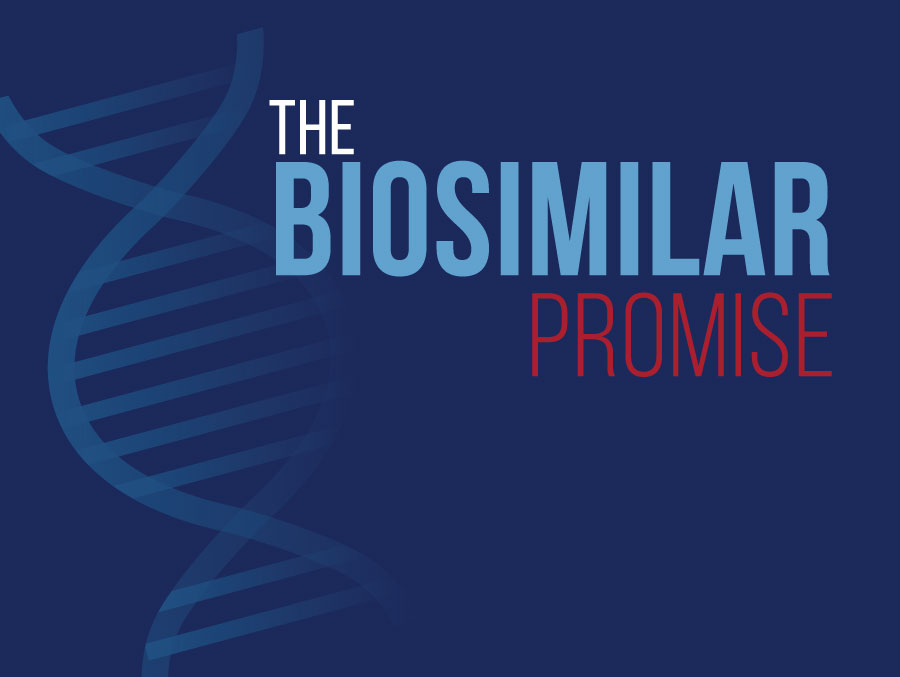
Reforms Can Improve Competition and Generate More Savings
Executive Summary
Reforms that will strengthen the biosimilar market and expand savings opportunities include:
-
- Reforming (ideally repealing) the Inflation Reduction Act’s price control measures.
- Improving the incentives underlying the current buy-and-bill system to better align the financial incentives of providers, payers, and patients.
- Promoting greater transparency to the opaque drug rebating system including addressing the rebate wall problem through comprehensive reform or prohibiting the anti-competitive rebating practices that are generally outlawed in other markets.
Given biosimilars’ demonstrated ability to reduce the costs of medicines, removing policy obstacles and improving the functioning of the competitive market can be expected to generate additional savings in the near- and longer-term. Three high priority reforms/changes include reforming (ideally repealing) the price negotiation authority granted to the Health and Human Services (HHS) by the Inflation Reduction Act (IRA), improving the buy-and-bill purchase system including delinking a clinic’s reimbursement from the price of drugs, and reforming the malfunctioning rebate system.
Reform the IRA’s Price Negotiation Authority
The price control measures in the IRA promote drug affordability less efficiently than competition and jeopardize future innovation. Per design, the maximum fair prices (MFP) negotiated between HHS and manufacturers – the official name for the effective price controls – will not be operative until January 2026. While the anticipation of price controls has already adversely impacted the drug market, repeal of the price controls before any become effective can avoid further costs that will kick in once the mandates are implemented. Effective reform is quite simple and straightforward: Legislation should repeal the language granting HHS its negotiation authority retroactive to the negotiations that occurred in 2024.
Given current political realities, complete repeal is likely unrealistic. In this case, clarifying the provisions that delay price negotiations on innovator drugs where a biosimilar is in development and about to launch can minimize the IRA’s disincentives to develop biosimilars.
Fix the Payment System
Inefficiencies plague the payment system for both drugs administered in clinical settings and drugs patients administer themselves. The specific inefficiencies differ, however, which means that some of the necessary reforms to improve the market for infusion drugs will differ from the reforms for non-infusion drugs. One overarching principle should guide reforms to both types of medicines – the interests of patients must be prioritized. In practice, this means that reforms should ensure that patients directly receive the savings enabled by biosimilars and the interests of providers are aligned with patients.
Better Align the Incentives of the Buy-and-bill System
With respect to infusion drugs specifically, assuming equivalent efficacy, it is in the interest of patients for the clinic to choose the lower-priced medicine while clinics’ interests are to choose the higher-priced medicine. Delinking clinics’ reimbursement for infusion drugs from the price of the medicines being administered will correct this fundamental misalignment of incentives. The best way to sustainably delink the reimbursement is to pay clinicians a fixed dollar fee that covers the value-added services that the doctor and clinic provide. A fixed fee also provides clinics with greater financial certainty regarding their revenues – clinic revenues will not decline following the introduction of biosimilars that will drive down the prices of both originator medicines and biosimilars.
Reform the Rebate System
Competitive markets do not operate efficiently without transparent prices. Yet, drug prices are notoriously opaque. Due to the price opacity, payers and PBMs are incentivized to prefer originator biologics with high list prices and large rebates over low-cost biosimilars. While payers and PBMs benefit from the rebates, this structure increases overall healthcare spending in the long term and harms patients because their costs are tied to biologics’ inflated list prices that do not reflect the large discounts and rebates that the payers receive.
Consequently, reforms to the current rebate system that fundamentally change these perverse incentives can promote greater biosimilar use. Such reforms should eliminate insurers incentives to prefer drugs with larger rebates on their formularies to expand access to lower cost biosimilars.
One potential reform that achieves this goal would mandate that patients must directly benefit from all discounts negotiated on their behalf. By eliminating the ability of drug market middlemen to skim off the discounts and rebates, this reform would remove the incentives to artificially inflate list prices. Biosimilars and originators would now compete by selling their drugs for lower, and transparent, net prices, which enables patients to benefit from the slower growing net prices and removes the incentive for clinics to prefer higher cost originators over lower cost biosimilars.
With respect to infusion biologics, mandating greater transparency can also address the problem of clinics receiving reimbursement from payers that are below the actual price they paid for the drugs, which is a growing risk in the markets with growing biosimilar competition and declining ASPs.
With rebates no longer driving the market process, the ability to block biosimilar entrants via rebate wall tactics would also disappear. Due to the importance of eliminating the rebate wall practice, and assuming that comprehensive rebate reform is infeasible, then addressing the anti-competitive rebating practices that are generally outlawed in other markets is a second-best approach. Such reforms would prohibit, or significantly restrict, the exclusionary- and volume-based rebate contracts that enable firms to establish anti-competitive rebate walls.
The Bottom Line
Removing current anti-competitive and anti-innovation practices will improve the competitive landscape for biosimilars. The expected result will be increased competition and, most importantly, reduced costs for patients and lower overall healthcare costs system wide.

